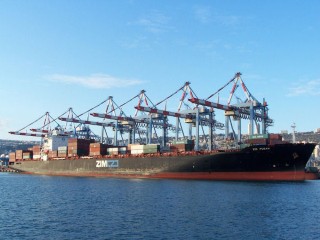
 Israel-based Zim Integrated Shipping Services rebounded from a US$66 million net loss in the third quarter of 2011 with a net profit of $16 million in the third quarter of this year—its best performance since the third quarter of 2010 as a result of a market recovery, internal efficiency, cost-cutting measures, and a positive season.
Israel-based Zim Integrated Shipping Services rebounded from a US$66 million net loss in the third quarter of 2011 with a net profit of $16 million in the third quarter of this year—its best performance since the third quarter of 2010 as a result of a market recovery, internal efficiency, cost-cutting measures, and a positive season.
“The third quarter of the year is traditionally the strongest quarter, representing the industry’s peak season,” Zim, the world’s 16th biggest container shipping line, said in an official release.
Earnings before interest, taxes, depreciation, and amortization amounted to $125 in the third quarter, up $140 million from the comparable quarter last year.
Revenues in the quarter amounted to $1 billion, a 9 percent increase that resulted from a 10 percent rise in the average freight rate from the same period the previous year, although carried 20-foot-equivalent units decreased 4.5 percent to 617,000 TEUs from the equivalent period in 2011.
Operating profit for the period was $80 million from an operating loss of $63 million in the same quarter last year.
But despite the strong results, ZIM expressed apprehensions about the fourth quarter, saying the industry remained vulnerable to the continued uncertainties in the global economy. It also cited the volatility in market conditions arising from the increase in available capacity as newbuilds continue to arrive as well as to fluctuating oil prices.
The shipping company said that, if necessary, it would approach its financing partners for concessions or additional flexibility to help it overcome difficulties. It also continues to discuss with the Israeli government about splitting the company into a domestic and international carrier.
“The delay in the government’s decision making may affect the company’s competitiveness and may complicate the creation of meaningful co-operations and joint-ventures which…have the potential to significantly improve the company’s cost structure, help cost reduction efforts, and result in improved optimization,” Zim said.
Photo courtesy of Zim




